National Preparedness and Response Plan – Ghana
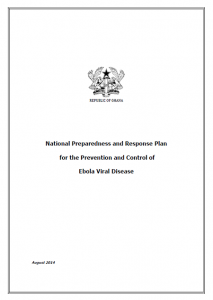 Ghana’s National Preparedness and Response Plan for the Prevention and Control of Ebola Viral Disease
Ghana’s National Preparedness and Response Plan for the Prevention and Control of Ebola Viral Disease
 Ghana’s National Preparedness and Response Plan for the Prevention and Control of Ebola Viral Disease
Ghana’s National Preparedness and Response Plan for the Prevention and Control of Ebola Viral Disease
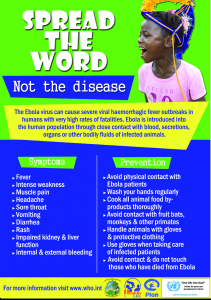 The poster has information about how the virus is transmitted from animals to humans. The audience is Liberian communities where introduction of the virus from bushmeat is a primary danger. The poster is clear, bright, and understandable.
The poster has information about how the virus is transmitted from animals to humans. The audience is Liberian communities where introduction of the virus from bushmeat is a primary danger. The poster is clear, bright, and understandable.
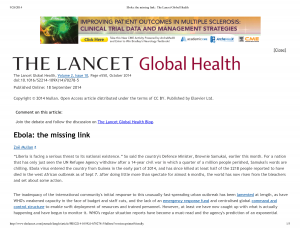 This editorial that appeared in the Lancet Sept. 18, 2014 points out that trust is the “missing link” that could help stem the Ebola epidemic.
This editorial that appeared in the Lancet Sept. 18, 2014 points out that trust is the “missing link” that could help stem the Ebola epidemic.
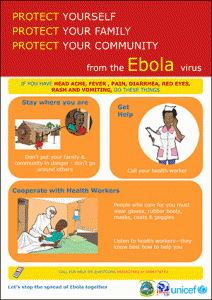 This poster’s audience is the general community in Liberia and has information on protecting yourself and your family, and steps to take to seek care. It has clear calls to action, is well-designed, and the use of graphics makes it appropriate for low-literacy populations.
This poster’s audience is the general community in Liberia and has information on protecting yourself and your family, and steps to take to seek care. It has clear calls to action, is well-designed, and the use of graphics makes it appropriate for low-literacy populations.
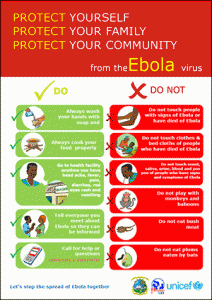 This poster’s audience is the general community in Liberia and has information on what to do and what not to do to protect yourself and your family. It has clear calls to action and is bright and attractive. It has good use of graphics. The use of text makes it appropriate for an audience that can read.
This poster’s audience is the general community in Liberia and has information on what to do and what not to do to protect yourself and your family. It has clear calls to action and is bright and attractive. It has good use of graphics. The use of text makes it appropriate for an audience that can read.
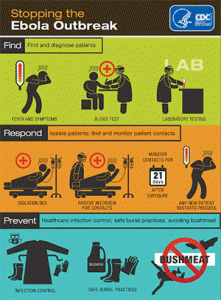 This poster’s audience is the general community in Sierra Leone. It shows signs and symptoms of Ebola and clearly calls people with symptoms to go to a health facility. It has a clear call to action, includes a phone number to call for help, and good use of graphics that makes it appropriate for low-literacy populations.
This poster’s audience is the general community in Sierra Leone. It shows signs and symptoms of Ebola and clearly calls people with symptoms to go to a health facility. It has a clear call to action, includes a phone number to call for help, and good use of graphics that makes it appropriate for low-literacy populations.
 Follow this link to a set of 7 radio messages in different languages (English, French, and 11 other languages). Radio messages include spots on prevention, risk, and stigma. Transcripts are included. These spots will be most useful when read by a local voice and adapted for local dialect and context.
Follow this link to a set of 7 radio messages in different languages (English, French, and 11 other languages). Radio messages include spots on prevention, risk, and stigma. Transcripts are included. These spots will be most useful when read by a local voice and adapted for local dialect and context.

The Ebola Communication Network was originally developed by the Health Communication Capacity Collaborative (Cooperative Agreement #AID-OAA-A-12-00058) and expanded under Breakthrough ACTION (Cooperative Agreement #AID-OAA-A-17-00017) both under the leadership of Johns Hopkins Center for Communication Programs. This website is now maintained by Johns Hopkins Center for Communication Programs and its contents are the sole responsibility of CCP. The contents of this website do not necessarily reflect the views of USAID, the United States Government, or Johns Hopkins University.
